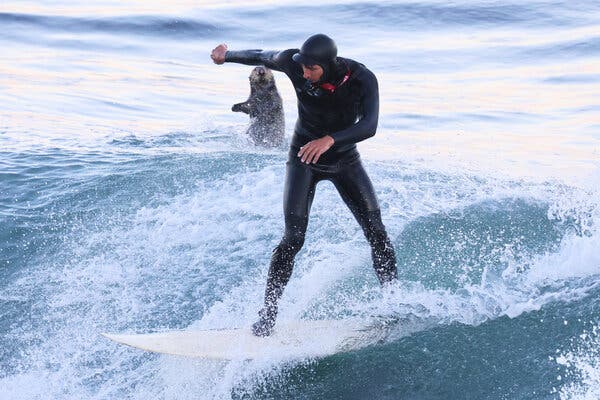A specialized pod of orcas has been observed hunting young great white sharks in the Gulf of California, using a sophisticated technique that involves flipping the sharks upside-down to access their nutrient-rich livers. This behavior, documented in a recent study published on November 3, 2025, raises questions about the changing dynamics of predator-prey relationships in the region.
Researchers identified the pod as Moctezuma’s pod, named after a notable member. These orcas have previously been recorded hunting rays and larger shark species, but their targeting of juvenile great whites marks a significant development in marine predator behavior. Marine biologist Erick Higuera Rivas, project director at Conexiones Terramar and Pelagic Life, emphasized the advanced intelligence and strategic thinking of orcas, noting that their hunting techniques are passed down through generations.
During routine monitoring, scientists witnessed two hunts in which the orcas successfully killed three juvenile white sharks. The first incident occurred in August 2020, when five orcas worked collaboratively to turn a juvenile shark upside-down, inducing a state known as tonic immobility. This state renders the shark defenseless, allowing the orcas to extract its liver. A similar hunt was observed in August 2022, confirming a pattern in their hunting behavior.
Dr. Salvador Jorgensen from California State University, a co-author of the study, pointed out that adult great white sharks typically flee from hunting orcas, suggesting that juveniles may lack the necessary defenses or experience to escape. “This is the first time we are seeing orcas repeatedly target juvenile white sharks,” he stated, indicating a potentially significant shift in the ecological balance.
The changing distribution of white sharks in the Pacific, influenced by climate events such as El Niño, may have created new opportunities for Moctezuma’s pod. The alteration of shark nursery areas could mean that juvenile sharks are increasingly exposed to predation by orcas. Researchers are planning further studies to assess whether the pod regularly hunts white sharks or focuses on juveniles when they are more abundant.
Dr. Francesca Pancaldi from the Instituto Politécnico Nacional highlighted the challenges of conducting such research, noting that fieldwork is costly and orca hunts are unpredictable. “So far, we have only observed this pod feeding on elasmobranchs. There could be more,” she said, underscoring the need for ongoing investigation into orca feeding behavior.
Understanding the interactions between orcas and juvenile great whites will be crucial for conservation efforts. As researchers gather more data, they aim to identify critical habitats for orcas and establish protected areas to mitigate human impact on these marine ecosystems. The insights gained from this study are expected to contribute significantly to marine science and the management of oceanic wildlife.
The findings of this research were published in the journal Frontiers in Marine Science, providing a detailed account of the interactions between killer whales and juvenile white sharks, furthering our understanding of predator dynamics in marine environments.







